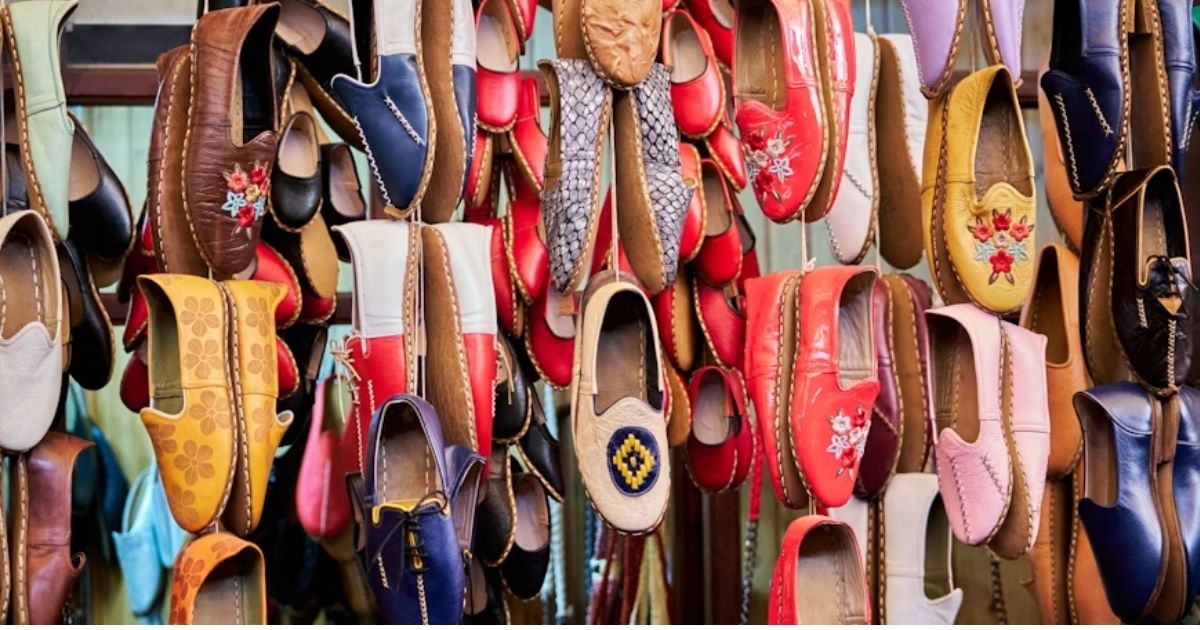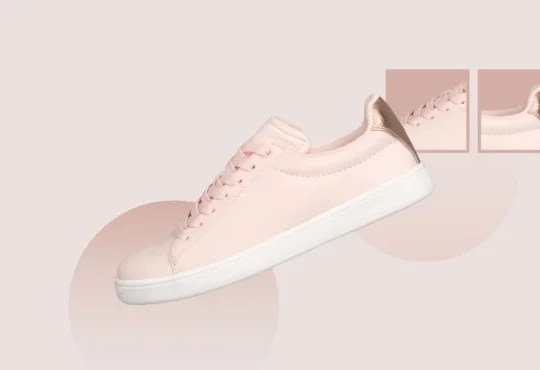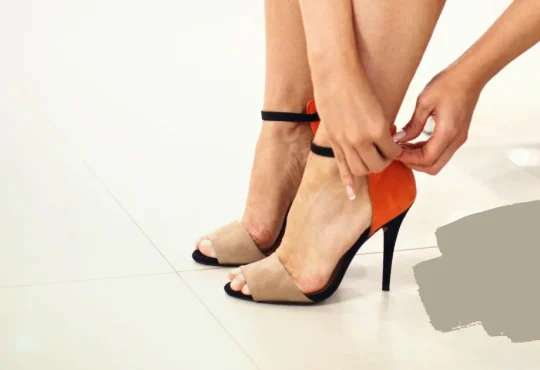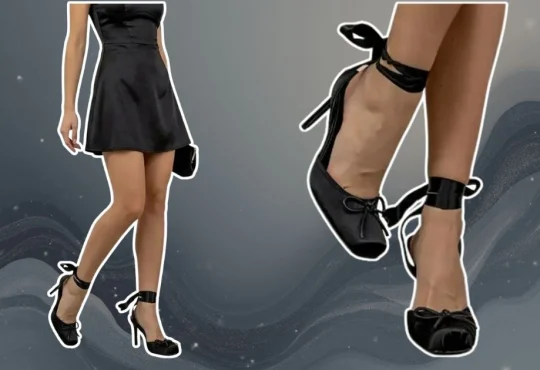Amid an era shaped by mass production and synthetic materials, the original role of footwear as a vessel of cultural expression often fades from focus. Traditional shoes once served as more than functional items—they reflected geography, social customs, artisanal skill, and collective identity. Embedded in their construction are narratives of origin, adaptation, and craftsmanship, shaped by environment and community need.
As global fashion reorients toward mindful production, heritage techniques, and cultural respect, renewed attention is turning to historical forms of footwear. Examples such as intricately beaded moccasins from North America and braided reed sandals from Sub-Saharan Africa illustrate the enduring connection between material culture and identity. These time-honored designs now reemerge not only as practical objects, but as expressions of resilience, artistry, and place—revealing the enduring soul within the sole.
Traditional Shoes With Soul & Story to Know in 2025
1. Asia
Japan
In Japan, footwear isn’t just functional—it’s spiritual. Traditional geta sandals, with their elevated wooden platforms, have been worn for centuries with a kimono or yukata, especially during festivals. Designed to keep hems dry during rain or snow, their clacking sound——is almost meditative. Modern versions are sleek, fashion-forward, and often seen in streetwear stylings.
Zōri, the flat, soft-soled sandals traditionally made from rice straw or cloth, hold a distinct place in Japanese culture. While their design influenced the modern flip-flop, zōri possess deeper cultural significance, often worn during tea ceremonies and paired with formal attire such as a kimono.
India
Indian jutis and mojris are rich in heritage. Originating during the Mughal era, these slip-on leather shoes are often embroidered with gold or silver thread, beads, mirrors, and colorful patterns. Each region—from Punjab to Rajasthan—has its flair, with variations in toe shape, stitching, and embellishment. What makes them enduring is their hand-stitched craftsmanship and their fusion of opulence with comfort.
Beyond aesthetic appeal, jutis reflect India’s vibrant textile history and artisan economy, which continues to flourish in local markets and design houses. In fact, many Indian designers today are reworking these classics into modern fusion wear, pairing them with everything from denim to saris.
2. Europe
The Balkans: Opanak and the Art of Rugged Resilience
The opanak, a traditional curled-toe leather shoe originating from the mountainous regions of Serbia, Bosnia, and Croatia, reflects a legacy of function and craftsmanship. Constructed from a single piece of hide and secured with leather laces around the ankle, this design provided both durability and traction across rugged terrain.
Once an everyday necessity, the opanak now serves primarily as a cultural symbol. Its presence endures in folk festivals and in contemporary fashion collections that reference Balkan heritage and artisanal techniques, preserving a connection to rural life and traditional shoemaking.
Spain: The Espadrille Evolution
Originating as practical footwear for Spanish farmers, the espadrille has evolved into a global fashion staple while retaining its cultural roots. Characterized by a jute sole and a canvas or cotton upper, this design dates back to 14th-century Catalonia, where it offered a lightweight, breathable solution for warm Mediterranean climates.
Contemporary interpretations often include wedge heels, ankle ribbons, and printed fabrics, reflecting modern style influences. Despite widespread popularity, traditional craftsmanship endures in the Basque and Catalan regions, where espadrilles continue to be handmade using time-honored weaving techniques and natural materials.
3. The Americas: Spirit, Symbolism, and Sustainability
North America: The Legacy of the Moccasin
In Native American traditions, the moccasin holds significant cultural and spiritual value, extending beyond its practical use as footwear. Constructed from soft hides such as deer, elk, or buffalo and stitched by hand using sinew or natural fibers, the moccasin reflects deep-rooted craftsmanship and a close relationship with the land. Its flexible structure enabled silent movement, making it well-suited for hunting and travel across varied landscapes, while also symbolizing a spiritual connection to the earth.
Regional variations emerged to meet environmental needs. In forested areas, such as those inhabited by Eastern Woodlands tribes, soft-soled versions provided a closer interaction with natural surfaces. Decorative elements—glass beads, porcupine quills, embroidery, and fringe—conveyed layered meanings, including tribal identity, social status, personal milestones, and ceremonial significance.
In contemporary contexts, moccasins are recognized both for their enduring craftsmanship and their role as cultural emblems. They remain integral to Indigenous identity, with modern Native designers revitalizing traditional methods while incorporating new aesthetic directions. This continued evolution highlights the importance of cultural preservation, innovation, and the resilience embedded in every stitch.
South America: Huaraches and Andean Ingenuity
In Mexico and regions of Central America, the huarache represents a longstanding example of indigenous craftsmanship and resourceful design. Originating in pre-Columbian times, these sandals traditionally featured hand-woven leather uppers attached to soles made from wood or rawhide. Later adaptations utilized rubber and recycled tires, demonstrating early sustainable practices that predate contemporary eco-fashion movements. Designed for durability and ventilation, huaraches served as reliable footwear for navigating hot climates and rugged terrain.
Beyond utility, huaraches convey stories of place, tradition, and artisanal skill. Weaving techniques vary by community, often incorporating dyed leather or colorful threads that reflect regional identity and personal expression. While historically crafted in rural workshops, huaraches have since gained recognition within global fashion circles, prompting a renewed appreciation that merges heritage preservation with contemporary aesthetics.
In the Andean highlands of Peru, Bolivia, and Ecuador, traditional footwear developed in response to high-altitude environments and fluctuating temperatures. Materials such as alpaca wool, heavy leather, and rubber were used to produce insulated, hard-wearing shoes suited to steep, rocky landscapes. High-top styles offered additional support and protection, often finished with hand-stitching and local dyes. These designs illustrate the intersection of environmental adaptation and cultural ingenuity, underscoring the functional artistry of Andean communities.
5. Africa: Footwear Forged in Community and Climate
North Africa
Within the bustling souks of Marrakech, babouches emerge as a hallmark of Moroccan craftsmanship—sleek, backless slippers traditionally crafted from dyed leather and adorned with intricate embroidery or metallic thread. Traditionally worn indoors, they’re now a global fashion item, effortlessly combining luxury and laid-back ease.
The Berber tribes of Morocco and Algeria also created durable leather sandals designed to withstand desert heat and rocky paths. Their minimalist construction—flat soles and basic straps—speaks to a deep practicality, but also to the refined artistry of desert life.
Sub-Saharan Africa
Traditional footwear in Sub-Saharan Africa embodies a rich synthesis of artisanal skill, cultural symbolism, and adaptive use of local materials.
Throughout the continent’s many regions, shoes have long been crafted from what the land provides—braided reeds, palm leaves, animal hides, bark, and other organic materials—blending practicality with meaning. Far from being purely functional, many of these shoes serve as expressions of community, heritage, and artistry.
In East Africa, the Maasai community exemplifies this connection through their signature beaded sandals. Crafted with precision, these sandals frequently feature detailed beadwork that conveys both visual artistry and cultural significance. Patterns and colors are carefully chosen to reflect aspects of life such as status, marital stage, or regional identity. The crafting of these sandals, typically by women, not only preserves traditional design techniques but also strengthens intergenerational bonds and empowers local economies through artisanal cooperatives.
In regions such as Nigeria and Ghana, urban markets showcase a fusion of creativity and sustainability through Aba-made sandals—footwear often constructed from repurposed materials like rubber, rope, and recycled tires. Named after the industrious city of Aba in southeastern Nigeria, these sandals are often fashioned from repurposed materials such as rubber soles, ropes, and upcycled tires. Durable and highly affordable, they represent innovation born of necessity—providing both functional footwear and a means of economic survival for local artisans. These sandals, widely sold in open-air markets and roadside stalls, reflect a spirit of ingenuity that transforms discarded items into objects of both style and purpose.
Oceania
Across many Pacific Island nations, traditional footwear tells a story of deep environmental harmony and cultural expression. Going barefoot remains a common practice—not as an absence of innovation, but as an intentional connection to the land and sea. The tactile relationship with earth, sand, and coral reinforces a spiritual and practical bond with the environment. Yet when footwear does appear, it speaks volumes through natural materials and meaningful design.
In regions such as Fiji, Samoa, Tonga, and Papua New Guinea, footwear crafted from coconut husk fibers, pandanus leaves, barkcloth (tapa), and hand-woven grasses becomes more than a utilitarian item—it transforms into a symbol of identity and heritage. These sandals, often reserved for ritual, celebration, or traditional dance, carry cultural narratives passed down through generations. During ceremonies, they complement intricate garments and body adornments, supporting performances that recount myths, honor ancestors, or mark life milestones. Lightweight, breathable, and sculpted from materials found mere steps from home, these creations embody sustainability and storytelling in equal measure. Far from being ornamental alone, they serve as cultural artifacts—rooted in the land, shaped by history, and carried forward through collective memory.
Modern Revival: Where Past Meets Present
So why are we seeing a renewed interest in these traditional shoes today?
The answer lies in a collective cultural shift. In a time of overproduction and environmental concern, people are seeking meaning, sustainability, and authenticity. Traditional footwear, made by hand and rooted in legacy, ticks all three boxes. Brands are increasingly collaborating with artisans to ensure fair trade, ethical sourcing, and cultural integrity. Consumers are learning to ask not just “how much?” but “who made it?” and “what does it represent?”
In fashion, these shoes are being reimagined—not erased. Designers are pairing espadrilles with structured blazers, styling moccasins with oversized knits, and turning babouches into streetwear staples. Even celebrities and influencers are stepping into the trend, not just as a look, but as a lifestyle.
Stepping Into Legacy
Traditional footwear is more than functional—it’s foundational. It reflects generations of innovation, adaptation, and aesthetic evolution. Every stitch, bead, weave, and sole carries a message: one of survival, of identity, of artistry. In a world that too often races toward the next new thing, these global soles remind us to walk with intention—and a little more appreciation for what came before.
Whether it’s a pair of Moroccan babouches or Mexican huaraches, wearing traditional shoes is like walking through history. And if we walk respectfully, we’re not just wearing a piece of fashion—we’re carrying forward a living legacy, one step at a time.




